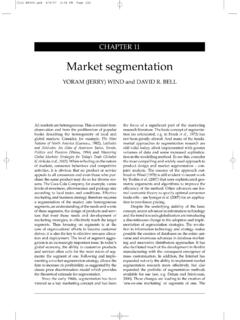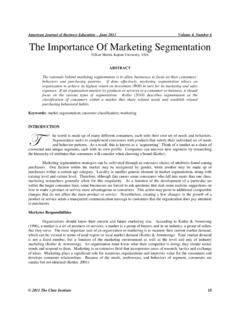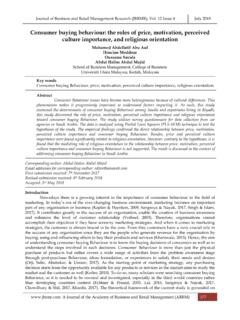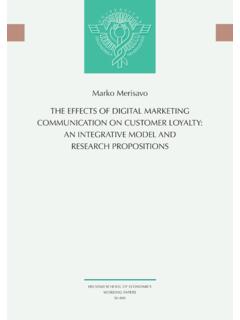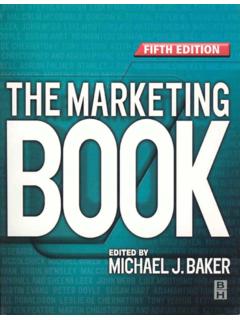Transcription of The Strategic Management Frameworks
1 The Strategic Management The Strategic Management FrameworksFrameworksArnoldo HaxAlfred P. Sloan Professor of Management PorterPorter ResourceResource-- based View of the based View of the FirmFirm The Delta ModelThe Delta ModelThe Frameworks for Competitive The Frameworks for Competitive PositioningPositioningPorterPorter s framework for Explaining the Profitability of a s framework for Explaining the Profitability of a BusinessBusinessCompetitive PositioningAchieving sustainable competitive advantageIndustry StructureFactors affecting industry profitabilityStrategy Formulation and ImplementationDefining and executing the managerial tasksElements of Industry Structure.
2 PorterElements of Industry Structure: Porter s Fives Five--ForcesForcesBarriers to Entry- Economies of scale- Product differentiation- Brand identification- Switching cost- Access to distribution channels- Capital requirements- Access to latest technology- Experience & learning effectsGovernment Action- Industry protection - Industry regulation- Consistency of policies- Capital movements among countries- Custom duties- Foreign exchange- Foreign ownership- Assistance provided to competitorsPower of Suppliers- Number of important suppliers- Availability of substitutes for the supplier's products - Differentiation or switching cost of
3 Supplier's products- Supplier's threat of forward integration- Industry threat of backward integration- Supplier's contribution to quality or service of the industry products- Total industry cost contributed by suppliers- Importance of the industry to supplier's profitAvailability of Substitutes- Availability of close substitutes- User's switching costs- Substitute producer's profitability & aggressiveness- Substitute price-valueRivalry Among Competitors- Concentration & balance among competitors- Industry growth- Fixed (or storage) cost- Product differentiation- Intermittent capacity increasing- Switching costs- Corporate Strategic stakesBarriers to Exit- Asset specialization- One-time cost of exit- Strategic interrelationships with other businesses- Emotional barriers- Government & social restrictionsPower of Buyers- Number of important buyers- Availability of substitutes for the industry products - Buyer's switching costs- Buyer's threat of backward integration- Industry threat of forward integration- Contribution to quality or service of buyer's products- Total buyer's cost contributed by the industry- Buyer's
4 ProfitabilityNew EntrantsThreat of new entrantsBargaining Power of SuppliersBargaining Power of BuyersBuyersThreat of substitutesSuppliersSubstitutesIndustry CompetitorsIntensityof RivalryFigure by MIT s Fives Five--Forces Model Applied to the Forces Model Applied to the Pharmaceutical Industry in the Early 1990sPharmaceutical Industry in the Early 1990sIntensityof Rivalry& CompetitionBargaining Power of Suppliers(Very Attractive)- Mostly commodities- Individual scientists may have some personal leverageBarriers to Entry (Very Attractive)- Steep R&D experience curve effects- Large economies-of-scale barriers in R&D and sales force- Critical mass in R&D and marketing require global scale- Significant R&D and marketing costs- High risk inherent in the drug development process- Increasing threat of new entrants coming from biotechnology companiesThreat of Substitutes (Mildly Unattractive)SUMMARY ASSESSMENT OF THE INDUSTRY ATTRACTIVENESS (Attractive)
5 - Generic and "Me-too" drugs are weakening branded, proprietary drugs- More than half of the life of the drug patent is spent in the product development and approval process - Technological development is making imitation easier- Consumer aversion to chemical substances erodes the appeal for pharmaceutical drugsBargaining Power of Buyers (Mildly Unattractive)- The traditional purchasing process was highly price insensitive: theconsumer (the patient) did not buy, and the buyer (the physician) did not pay- Large power of buyers, particularly plan sponsors and cost containment organizations, are influencing the decisions to prescribe less expensive drugs- Mail-order pharmacies are obtaining large discounts on volume drugs- Large aggregated buyers ( , hospitalsuppliers, large distributors, government institutions) are progressively replacing the role of individual customers- Important influence of the government in the regulation of the buying processIntensity of Rivalry (Attractive)
6 - Global competition concentrated among fifteen large companies- Most companies focus on certain types of disease therapy- Competition among incumbents limited by patent protection- Competition based on price and product differentiation- Government intervention and growth of "Me-too" drugs increase rivalry- Strategic alliances establish collaborative agreements among industry players- Very profitable industry, however with declining marginsFigure by MIT a business in an attractive industry where you can excel; Make a business in an attractive industry where you can excel; then excel by achieving a low cost of differentiation though unithen excel by achieving a low cost of differentiation though unique activitiesque activitiesTHE VALUE CHAINI nboundlogisticsOutbound logisticsServiceMarketing& salesOperationsPRIMARY ACTIVITIESMARGINSUPPORT ACTIVITIESFirm InfrastructureHuman Resource ManagementTechnology DevelopmentProcurementFigure by MIT 'S VALUE CHAINMARGINVery strong corporate cultureOne of America's best managed companiesSuperb financial Management & managerial control capabilitiesManagement InfrastructureHuman Resources ManagementTechnology
7 DevelopmentProcurementManufacturingInbou ndLogisticsOutbound LogisticsMarketing & SalesServiceFriendly & cooperative labor relationsStrong recruiting programs in top universitiesVertical integration in chemical productsIncreasing manufacturingflexibility and cost reductionsStressing quality and productivity improvementsGlobal facilities networkAcquisition of Medcoprovides unique distributioncapabilities and informationtechnology supportMedco is the number one mail-order firmMedco's service excellence has attracted major corporations and health-care organizations as leadershipLarge direct sales staffGlobal marketing coverageLeverage through Medco, including powerful marketing groups and sales forces, and proprietary formularyMedco IT infrastructure anddatabase, covering patients, physicians, and drug usesStrategic alliancesTechnology leader.
8 Developer of break-path drugs ( , Vasotec, Sinement, Mevacor)Intensive R&D spendingStrengthening technological & marketing capabilities through Strategic alliances (Astra, DuPont, and Johnson & Johnson)Fastest time-to-market in drug discovery and drug approval processes Excellent training & development Excellent rewards & health-care programsVery lean structureHighly concerned about ethics, ecology, and safetyFigure by MIT are two ways to compete: Low Cost or There are two ways to compete: Low Cost or DifferentiationDifferentiationThe efficiency of the low cost providerThe efficiency of the low cost provider s cost structure allows pricing below the average competitor, s cost structure allows pricing below the average competitor, which in the long run may put average competitors out of busineswhich in the long run may put average competitors out of business.
9 S. This is why the alternative to low cost needs to be differentiatThis is why the alternative to low cost needs to be differentiation, offering unique product attributes that ion, offering unique product attributes that the customer values and will pay a premium customer values and will pay a premium ProductBest Product$/UnitCostCostCostMarginMarginMar ginAveragePlayerLow Cost PlayerDifferentiation PlayerTotal customer Solutions PlayerHowever, the Total customer Solutions positioning offers a However, the Total customer Solutions positioning offers a possible preferred alternative by introducing significant cost possible preferred alternative by introducing significant cost savings (and/or revenue increases) to the (and/or revenue increases) to the customer .
10 $/UnitCostCostCostMarginMarginMarginAver agePlayerLow Cost PlayerDifferentiation PlayerMarginCostBest ProductTotal customer SolutionsCritical Elements in PorterCritical Elements in Porter s Frameworkss FrameworksFocus of Strategic AttentionTypes of Competitive AdvantageBasic Unit of Competitive AdvantagePorterIndustry/ BusinessLow cost or DifferentiationActivitiesPorterPorter s winning Formulas winning FormulaPick a business in an attractive industry in which you can excel. Notice that Porter s framework stressed rivalry and competition. Therefore,an attractive industry is one in which we can achieve as close to a monopolistic position as possible.










